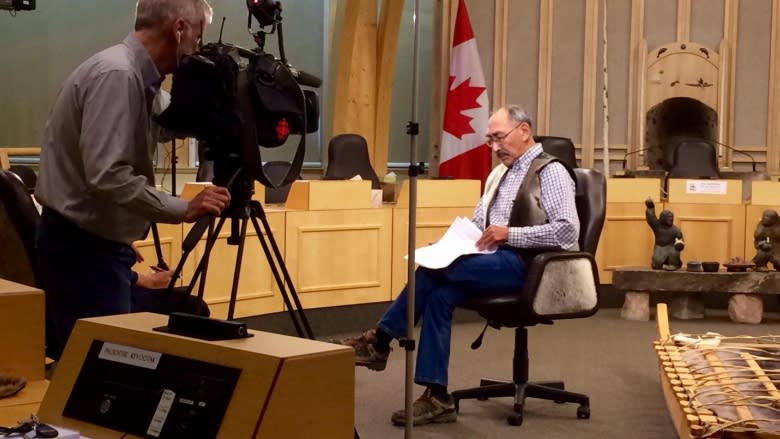2/3 of Nunavut Grade 12 students fail Alberta diploma exams
- Editor's note: An earlier version of this story emphasized a large gap between student diploma exam results and student course work grades. This story has been substantially altered to reflect more complete information provided by the Department of Education. The CBC is still trying to obtain accurate information in order to compare students' diploma grades with course work grades.
Numbers from Nunavut's Department of Education show that two-thirds of Grade 12 students last year failed the Alberta standardized diploma exams.
Nunavut's Department of Education uses Alberta curriculum in its schools, including Alberta Grade 12 exams, as a final assessment of secondary students.
According to information from the department, last year's Grade 12 students averaged just over 40 per cent on their final exams.
The CBC earlier reported that Grade 12 students also received an average of 75 per cent in their course work, based on information provided by the department.
Department spokeswoman Wende Halonen now says that average refers only to the roughly one-third of students who passed the diploma exam. According to Halonen, those students averaged roughly 60 per cent on their diploma exams — a gap of roughly 15 per cent.
It's not clear what the average coursework grade was for students who failed the diploma exam. The department is still working to provide that information.
The average transcript mark for last year's graduates, which combines students' course marks with their exam results, was 71 per cent.
'Greater emphasis on… classroom assessment'
Traditionally, Grade 12 exams made up 50 per cent of a student's final mark. Under the change, they now constitute only 30 per cent — with classroom studies making up 70 per cent.
In September 2015, Alberta's education department made the same shift in how its exams are weighted.
That department said the "exam weighting change [would] help ensure accurate student assessment" and provide "students with multiple and varied opportunities to demonstrate achievement."
But the gap that exists between exam and classroom marks exists regardless of how those grades are weighted, and it's something that has been worrying people in Nunavut for years.
Auditor general's report noted gap
A 2013 auditor general's report noted that the Grade 12 students it examined over three years achieved classroom grades that were, on average, 30 per cent higher than the grade obtained on the standardized Alberta exam.
By comparison, students in Whitehorse had class marks that were about four per cent higher than their standardized test mark.
At the time, departmental officials cited the language of the exam — English rather than Inuktitut — and the assessment methods used by Nunavut schools to explain the difference.
But the audit found Nunavut's Education department had done no analysis to explain the discrepancy, and argued that "without such an analysis, the department does not know whether students are being properly prepared in the classroom for the exams, whether teachers need additional support in providing classroom assessments, or whether different assessment tools and approaches are required."
The report recommended the department analyze the gap. The department accepted that recommendation and said, in 2013, it had already established a working group to do so.
Graduates meeting Canadian standards, says minister
On Monday, Nunavut's Education Minister Paul Quassa was in Yellowknife to renew its agreement with Alberta to use the province's exams for the next five years.
At the event, Quassa refused to answer questions about the recent gap in marks, saying he was unfamiliar with the numbers — but maintained that Nunavut's education system is "very rigorous."



